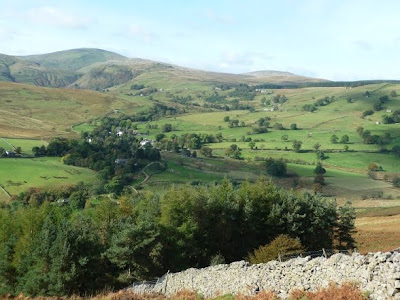Bill and Dottie were an interesting pair. Something really special, filially. Bill and Mary had been married 10 years before Bill wrote her a letter that was not also addressed to his sister. Maybe the postal rates were really, really high. His infatuation with social justice, the Revolution, and then his inward turn, are of interest. As well his fathering a French child in 1792-93, but never quite getting around to marrying the French mother of his child, whom he professed to love, etc. Too busy with his poetry, I guess. And with Dottie. I assume 10,000 or more doctoral dissertations have already looked into this.
We walked about Grasmere in the rain for a bit, visiting the church and Bill's grave, and Dottie's, more mountain gear and souvenir shops, did some grocery shopping at the Coop, and then moved on to Ambleside and the Skelwith Fold Caravan Park. Skelwith Fold is apparently another noble's deer park turned into a holiday park for the commoners—well, the more affluent commoners. We stay in such places about once a week now...fresh water, the wash, the trading library, the sewage, maybe some internet, etc., then back to rough but scenic and free camping the rest of the week. But the former deer parks are nice—old, seral forests, often with old, exotic trees. Someone had to do it.
 |
Dove Cottage, where William and Dorothy Wordsworth, and others, lived in the early 1800s, before he became really famous |
 |
A stone bench found by Coleridge while puttering around in the garden, ever since known as the Coleridge Bench; he was a frequent visitor |
 |
The Wordsworth Steps, which he put in himself, they said |
 |
Gravesite |
 |
Worsdworth's actual grave, Dottie on his right, Mary on his left |
 |
"Not raised in nice proportion was the pile. But large and massy; for duration built. With pillars crowded, and the roof upheld, By naked rafters intricately crossed." |







































